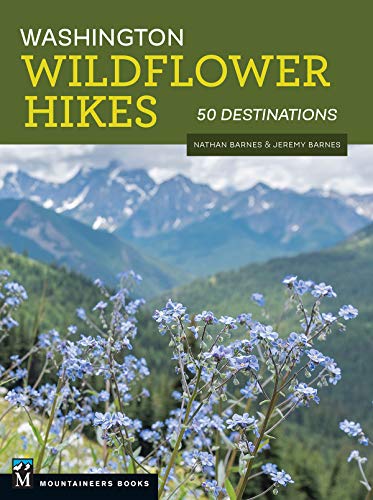Ashland Lakes Trail
Follow the Ashland Lakes Trail into Morning Star Natural Resource Conservation Area (NRCA) to find lakes, marshes, mountaintops, and old growth forest.
Total Distance: 5.5 miles
Total Ascent: 800ft
Highest Point: 3000ft
Total Ascent: 800ft
Highest Point: 3000ft
To get there, take I-5 North to Exit 194. Follow Highway 2 for about two miles. Stay in the left lane and merge onto Lake Stevens Highway 204. Follow for two miles to Highway 9. Take the left onto Highway 9 toward Lake Stevens. In just under two miles reach Highway 92 to Granite Falls. Take a right and follow for about nine miles to the Mountain Loop Highway. Follow the MLH for nearly 16 miles to FR 4020, signed for multiple trailheads including the Ashland Lake Trail. Take a right and follow the gravel road about two-and-a-half miles to a junction. Head right on to FR 4021 and continue for a mile and a half to a junction with Spur 016, signed for Ashland Lakes. Head uphill and find the trailhead at the top. View Google Directions >>
The trail begins by following a logging road through a young forest of recovering clear-cut. Mostly wide and flat, this first mile or so of trail breezes quickly past grassy marshes and over a small creek before leaving the road and plunging into old growth. The change is dramatic. The forest closes in and trees loom above you as you cross planks spanning creeks, puddles and bogs. Stroll through lush undergrowth and past moss-covered rocks. Find the junction to Beaver Plant Lake branching off this network of boardwalks and take the short side trip out to this little lake before returning to the trail. As you continue, you’ll pass the junction to the Mallardy Ridge Trail leading out to Bald Mountain – an adventure for another day. Push ahead to Upper Ashland Lake.
Hugging Upper Ashland’s lakeshore, boardwalks lead you around the lake. Pass the occasional wooden platform built to allow campers to pitch a tent with the hope of staying dry on the lake’s soggy shores. After you’ve gotten your fill of Upper Ashland Lake, continue down another half mile to Lower Ashland Lake. Slightly less traveled than the upper lake, this tree-lined lake is a little wilder and you are less likely to encounter other hikers here. Continue to the end of the lake to find a log bridge spanning Wilson Creek and beyond another platform that makes for a good stopping point. The trail continues another mile and a half to Twin Falls Lake, but recent storm damage has washed out the trail and the Department of Natural Resources has closed the trail until further notice.
The Ashland Lakes Trail has the right mix of distance, elevation and destinations to make it ideal for bringing younger hikers along. The elaborate system of bridges and boardwalks also make this a fun hike for both new and experienced hikers. However, the area does receive quite a lot of rain – over 100 inches annually – which means you can almost always expect a little mud and that boardwalks will be a little slippery. Still, each of the three lakes has their own personality and offer a great deal to see on this relatively short and easy hike.
Hugging Upper Ashland’s lakeshore, boardwalks lead you around the lake. Pass the occasional wooden platform built to allow campers to pitch a tent with the hope of staying dry on the lake’s soggy shores. After you’ve gotten your fill of Upper Ashland Lake, continue down another half mile to Lower Ashland Lake. Slightly less traveled than the upper lake, this tree-lined lake is a little wilder and you are less likely to encounter other hikers here. Continue to the end of the lake to find a log bridge spanning Wilson Creek and beyond another platform that makes for a good stopping point. The trail continues another mile and a half to Twin Falls Lake, but recent storm damage has washed out the trail and the Department of Natural Resources has closed the trail until further notice.
The Ashland Lakes Trail has the right mix of distance, elevation and destinations to make it ideal for bringing younger hikers along. The elaborate system of bridges and boardwalks also make this a fun hike for both new and experienced hikers. However, the area does receive quite a lot of rain – over 100 inches annually – which means you can almost always expect a little mud and that boardwalks will be a little slippery. Still, each of the three lakes has their own personality and offer a great deal to see on this relatively short and easy hike.
History
Ashland Lakes have attracted hikers and campers for years, but it wasn’t until the late 1980s that steps were taken to protect the area. Around 1989 the Mt. Pilchuck Natural Resource Conservation Area was formed, preserving 9606 acres of land ranging from the top of Mt Pilchuck down the to shores of Ashland Lakes. The ecologically diverse area included alpine meadows and stands of old growth roughly 300 years old. In 2007, the Mt. Pilchuck NRCA was combined with nearby Greider Ridge NRCA and Morning Star NRCA. Now collectively known as the Morning Start NRCA, this 26000-acre conservation area provides a home to threatened species as well as a wide array of recreational opportunities.
Nearby hikes
Similar Difficulty
Similar Features












